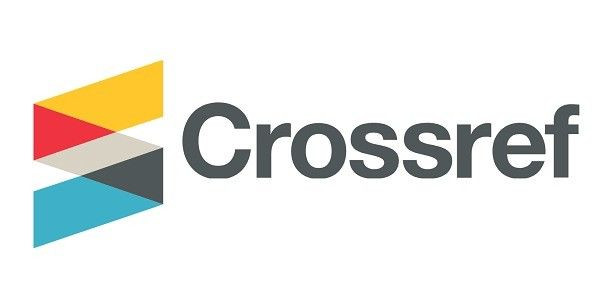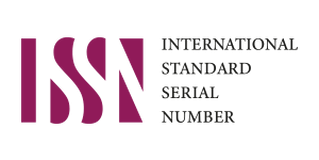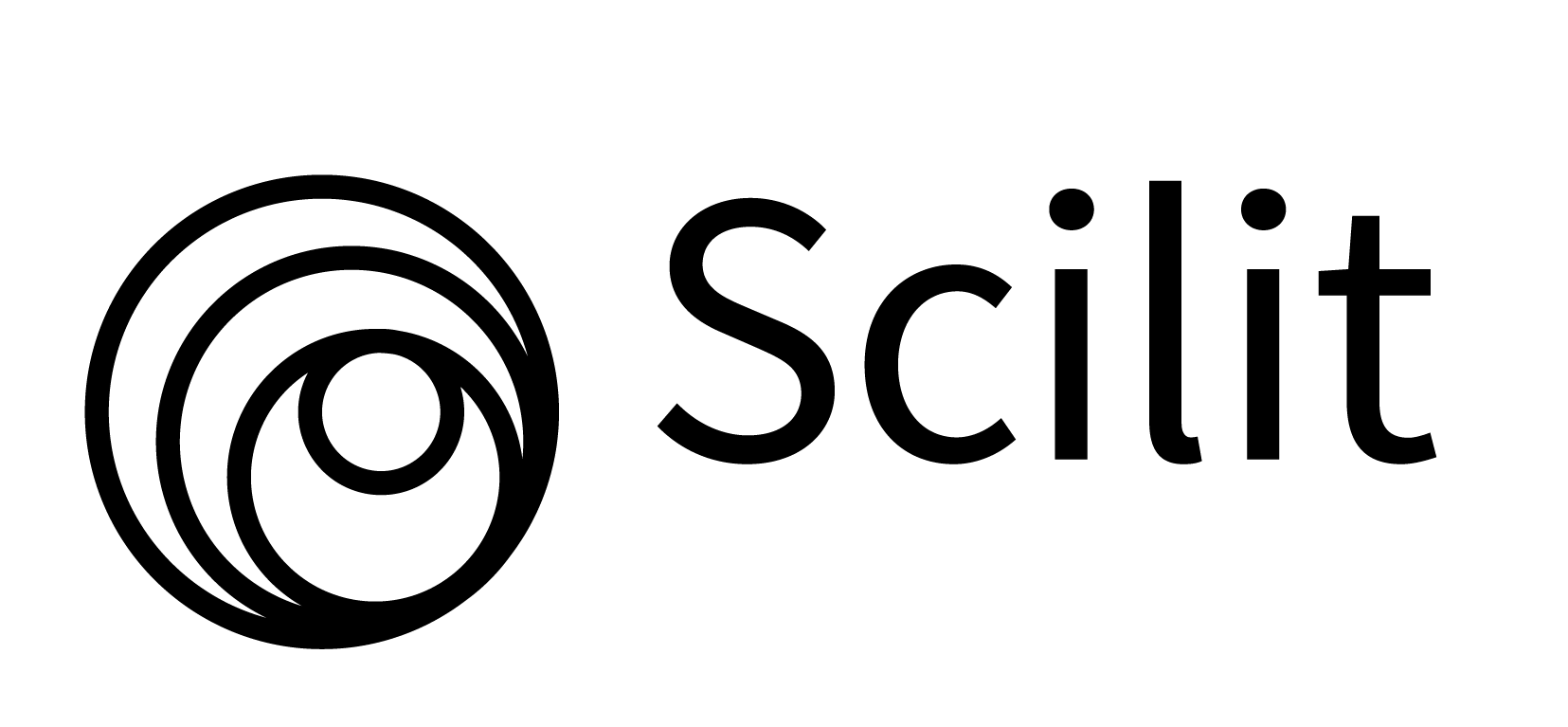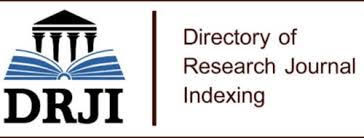Review Article
The Effect of Bitter Melon Consumption on Blood Glucose Reduction: Chemical Overview and Mechanisms on the Pancreas
- Agussalim
Corresponding author: Agussalim, Parepare School of Nursing, Makassar Health Polytechnic, Ministry of Health, Indonesian Republic.
Volume: 2
Issue: 3
Article Information
Article Type : Review Article
Citation : Agussalim. The Effect of Bitter Melon Consumption on Blood Glucose Reduction: Chemical Overview and Mechanisms on the Pancreas. Journal of Medical and Clinical Case Reports 2(3). https://doi.org/10.61615/JMCCR/2025/JULY027140717
Copyright: © 2025 Agussalim. This is an open-access article distributed under the terms of the Creative Commons Attribution License, which permits unrestricted use, distribution, and reproduction in any medium, provided the original author and source are credited.
DOI: https://doi.org/10.61615/JMCCR/2025/JULY027140717
Publication History
Received Date
03 Jul ,2025
Accepted Date
14 Jul ,2025
Published Date
17 Jul ,2025
Abstract
Background: Diabetes mellitus is a chronic metabolic disease characterized by hyperglycemia. Efforts to reduce blood sugar levels through herbal treatments are continually evolving, one of which is the use of bitter melon (Momordica charantia).
Objective: To explain the effect of bitter melon consumption on reducing blood glucose levels and to elaborate on its chemical composition and mechanisms in the pancreas.
Methods: A literature review and narrative analysis of experimental and chemical studies related to bitter melon and its antihyperglycemic activity.
Results: The fruit and leaves of bitter melon contain active compounds such as charantin, vicine, polypeptide-p, and cucurbitacin, which have been proven to have hypoglycemic effects. These compounds function by increasing insulin secretion from pancreatic beta cells, improving insulin sensitivity, and inhibiting carbohydrate-degrading enzymes.
Conclusion: Regular consumption of bitter melon has the potential to reduce blood glucose levels through various molecular mechanisms that support pancreatic function and glucose metabolism.
Keywords: Bitter melon, blood sugar, diabetes mellitus, pancreas, charantin, insulin.
►The Effect of Bitter Melon Consumption on Blood Glucose Reduction: Chemical Overview and Mechanisms on the Pancreas
Agussalim1*
1Parepare School of Nursing, Makassar Health Polytechnic, Ministry of Health, Indonesian Republic.
Introduction
Diabetes mellitus (DM) is a complex and chronic metabolic disorder that results from the body’s inability to produce or properly utilize insulin, a hormone essential for regulating blood glucose levels. This dysregulation leads to persistent hyperglycemia, which, if left uncontrolled, causes serious long-term complications such as cardiovascular diseases, kidney failure, neuropathy, retinopathy, and increased risk of infections. The burden of diabetes is escalating worldwide, posing significant challenges not only to individuals affected but also to healthcare systems due to the high costs associated with treatment and management of its complications.
In Indonesia and many other countries, rapid socio-economic changes have influenced lifestyle factors that contribute to the rising prevalence of diabetes. Urbanization, increased consumption of processed foods, sedentary behavior, and obesity have all contributed to this trend. The disease primarily affects adults, but there is a concerning rise in cases among younger populations, including adolescents and children. These trends underscore the urgent need for effective, sustainable, and accessible interventions to prevent and manage diabetes on a population scale.
Current diabetes management strategies often involve pharmacological agents such as insulin and oral hypoglycemic drugs that aim to maintain blood glucose within normal ranges. However, despite advances in medication, achieving optimal glycemic control remains a challenge for many patients due to issues like drug side effects, adherence difficulties, and financial constraints. Therefore, attention has increasingly shifted toward complementary approaches, including lifestyle modifications and the use of natural products with antidiabetic properties.
Medicinal plants have been used for centuries in traditional medicine systems around the world, and many have been found to contain active compounds that influence glucose metabolism. Among these, bitter melon (Momordica charantia) stands out as a promising natural agent with demonstrated hypoglycemic effects. The fruit of bitter melon is rich in various phytochemicals that have been shown to mimic or enhance insulin activity, promote glucose uptake by cells, and modulate enzymes involved in carbohydrate metabolism.
The bitter taste of Momordica charantia, although often perceived as unpleasant, reflects the presence of potent bioactive substances such as charantin, polypeptide-p, and vicine. These compounds act synergistically to reduce blood glucose levels through multiple pathways. For example, polypeptide-p is known to have insulin-like properties, while charantin has been reported to stimulate glucose uptake and improve insulin sensitivity. Additionally, bitter melon may influence pancreatic beta-cell function by promoting regeneration and reducing oxidative stress, thereby enhancing endogenous insulin secretion.
Besides its direct effects on blood sugar regulation, bitter melon also exhibits antioxidant and anti-inflammatory activities that can protect tissues from damage caused by chronic hyperglycemia. These additional benefits may contribute to the prevention or delay of diabetes-related complications, further supporting the use of bitter melon as an adjunctive therapy in diabetes management.
Despite its traditional use and emerging scientific evidence, comprehensive research is still needed to fully understand the mechanisms by which bitter melon exerts its antidiabetic effects, optimal dosage, safety profiles, and potential interactions with conventional medications. This study aims to systematically investigate the impact of bitter melon consumption on blood glucose levels and to analyze the chemical constituents responsible for its therapeutic effects, focusing particularly on how these compounds interact with pancreatic function to improve insulin production and glucose metabolism.
Methods
This research employed a qualitative narrative approach utilizing a comprehensive literature review to explore the effects of bitter melon (Momordica charantia) on blood glucose regulation and pancreatic function. A systematic search was conducted across several major scientific databases, including Scopus, PubMed, and Google Scholar, focusing on articles published between 2013 and 2024 to ensure the inclusion of recent and relevant findings.
The inclusion criteria for selecting studies were stringent to maintain the quality and relevance of the review. Studies considered eligible were primarily experimental or laboratory-based investigations that specifically assessed the hypoglycemic effects of bitter melon, its bioactive chemical constituents, and their mechanisms of action on the pancreas. Both in vitro and in vivo studies were included to provide a comprehensive understanding of the molecular and physiological impacts of bitter melon consumption.
Data extraction focused on identifying key outcomes such as changes in blood glucose levels, insulin secretion, pancreatic beta-cell regeneration, and modulation of enzymes related to glucose metabolism. Studies examining the pharmacodynamics and pharmacokinetics of bitter melon compounds were also reviewed to elucidate their therapeutic potential and safety profiles.
This approach allowed for the synthesis of findings from diverse experimental designs, including cell culture studies, animal models of diabetes, and controlled clinical trials. Emphasis was placed on studies that provided mechanistic insights into how bitter melon components interact with pancreatic tissue and influence systemic glucose homeostasis.
The narrative synthesis highlights the convergence of evidence supporting the hypoglycemic properties of bitter melon and its multifaceted role in diabetes management, thereby identifying gaps in knowledge and potential directions for future research.
Results
Chemical Content of Bitter Melon Fruit and Leaves
The fruit and leaves of Momordica charantia (bitter melon) are rich in bioactive compounds that contribute to its antidiabetic properties:
- Charantin: A potent mixture of steroidal glycosides known for its hypoglycemic effect, reportedly stronger than the oral hypoglycemic drug tolbutamide. Charantin increases glucose uptake by muscle and liver cells, thereby lowering blood glucose levels [11,12].
- Polypeptide-p (plant insulin): A unique peptide structurally and functionally similar to human insulin. It directly reduces blood glucose following oral ingestion by mimicking insulin activity [13].
- Vicine: A glycoside compound that enhances insulin secretion and improves overall glucose metabolism through its effects on pancreatic beta cells [14].
- Cucurbitacin: A bitter triterpenoid compound with significant anti-inflammatory properties that helps reduce insulin resistance by modulating inflammatory pathways linked to metabolic dysfunction [15].
- Alkaloids and flavonoids: These act as powerful antioxidants that protect pancreatic beta cells from oxidative damage caused by chronic hyperglycemia and inflammatory stress [16].
Mechanism of Action on the Pancreas
The hypoglycemic effects of bitter melon involve several mechanisms acting on the pancreas and systemic glucose metabolism:
- Stimulation of Pancreatic Beta Cells: Active compounds such as charantin and vicine enhance insulin secretion by stimulating glucokinase enzymes and intracellular Ca²⁺ signaling pathways, which trigger insulin exocytosis from beta cells [17].
- Regeneration of Beta Cells: Preclinical studies demonstrate that bitter melon extracts promote repair and regeneration of damaged pancreatic beta cells, improving endogenous insulin production in diabetic models [18].
- Inhibition of α-glucosidase and α-amylase Enzymes: Flavonoids and saponins in bitter melon inhibit these digestive enzymes responsible for carbohydrate breakdown in the intestines, leading to decreased glucose absorption and reduced postprandial blood sugar spikes [19].
- Increased Insulin Sensitivity: Bitter melon compounds improve the responsiveness of peripheral tissues to insulin, thereby enhancing glucose uptake and utilization [20].
Clinical Effects of Bitter Melon Consumption
Animal and human studies have provided evidence supporting the blood glucose-lowering effects of bitter melon:
- Animal Studies: Diabetic rats administered bitter melon extract showed a significant decrease in fasting blood glucose within 14 to 30 days of treatment, with improvements in insulin levels and pancreatic histology [21,22].
Human Studies: Clinical trials report that consuming 50–100 ml of bitter melon juice daily for two weeks results in a statistically significant reduction in fasting blood glucose levels among type 2 diabetic patients [23,24].
Table 1. Chemical Compounds in Bitter Melon and Their Hypoglycemic Roles
|
Compound |
Type |
Hypoglycemic Mechanism |
References |
|
Charantin |
Steroidal glycosides |
Increases glucose uptake in muscle and liver cells |
11,12 |
|
Polypeptide-p |
Peptide |
Mimics insulin, directly lowers blood glucose |
13 |
|
Vicine |
Glycoside |
Enhances insulin secretion and glucose metabolism |
14 |
|
Cucurbitacin |
Triterpenoid |
Anti-inflammatory; reduces insulin resistance |
15 |
|
Alkaloids |
Alkaloid |
Antioxidant; protects pancreatic beta cells |
16 |
|
Flavonoids |
Polyphenolic compounds |
Antioxidant; inhibits digestive enzymes and protects cells |
16,19 |
Table 1 outlines the various chemical compounds found in the fruit and leaves of bitter melon (Momordica charantia), along with their primary mechanisms of action in lowering blood glucose levels. Charantin, one of the key components, is a steroidal glycoside that enhances glucose uptake in muscle and liver cells, contributing to reduced blood sugar levels. Polypeptide-p, also known as plant insulin, mimics the structure and function of human insulin and directly reduces blood glucose following consumption.
Vicine, a glycoside compound, promotes insulin secretion and improves overall glucose metabolism. Cucurbitacin, a bitter-tasting triterpenoid, exhibits anti-inflammatory effects that help reduce insulin resistance. Meanwhile, alkaloids and flavonoids in bitter melon act as potent antioxidants that protect pancreatic beta cells from oxidative stress-induced damage.
Each of these compounds operates through different but complementary mechanisms, making bitter melon a promising natural agent in diabetes management, particularly in improving pancreatic function and enhancing insulin sensitivity.
Table 2. Summary of Key Research Findings on Bitter Melon and Blood Glucose
|
Study Type |
Intervention |
Duration |
Outcome |
Reference |
|
Animal study |
Bitter melon extract (dosage variable) |
14–30 days |
Significant decrease in fasting blood glucose, improved insulin levels, pancreatic beta cell regeneration |
21,22 |
|
Human clinical |
50–100 ml bitter melon juice/day |
2 weeks |
Significant reduction in fasting blood glucose in type 2 diabetes patients |
Table 2 presents a summary of major findings from both animal and human studies investigating the effects of bitter melon on blood glucose regulation. In animal studies, the administration of bitter melon extract over a period of 14 to 30 days resulted in a significant reduction in fasting blood glucose levels. These studies also reported improvements in insulin secretion and regeneration of pancreatic beta cells, suggesting a protective and restorative role of bitter melon in diabetic conditions.
In human clinical trials, participants with type 2 diabetes who consumed 50 to 100 ml of bitter melon juice daily for two weeks also experienced statistically significant reductions in fasting blood glucose levels. These findings indicate that bitter melon may serve as a complementary therapy in the dietary management of diabetes mellitus by improving glycemic control in a relatively short period.
Overall, the evidence from both experimental models and clinical interventions supports the hypoglycemic potential of bitter melon, reinforcing its traditional use and its emerging role in evidence-based complementary diabetes management.
Discussion
The findings of this study reinforce both traditional usage and scientific evidence supporting Momordica charantia (bitter melon) as an effective complementary intervention for managing diabetes mellitus. The active compounds identified—charantin, polypeptide-p, vicine, cucurbitacin, alkaloids, and flavonoids—play crucial roles in modulating blood glucose levels, enhancing insulin sensitivity, and supporting pancreatic function.
Charantin, a steroidal glycoside, has been shown to enhance glucose uptake in muscle and liver cells, acting similarly to some oral hypoglycemic drugs [11]. Polypeptide-p, a plant insulin, mimics the function of human insulin and reduces blood glucose following oral intake [12]. Vicine stimulates insulin secretion and improves glucose metabolism through beta-cell activation [13]. Cucurbitacin, a triterpenoid compound, exhibits anti-inflammatory activity that contributes to reducing insulin resistance [14]. Furthermore, the antioxidant properties of flavonoids and alkaloids help protect pancreatic beta cells from oxidative damage, preserving endogenous insulin production [15].
Bitter melon appears to act through multiple mechanisms, including stimulation and regeneration of pancreatic beta cells, inhibition of α-glucosidase and α-amylase enzymes in the gastrointestinal tract, and enhancement of insulin sensitivity in peripheral tissues [16,17]. These actions indicate that bitter melon is not only effective in reducing blood glucose levels acutely but may also provide long-term metabolic benefits by supporting pancreatic health and reducing insulin resistance.
Animal studies have reported a significant decline in fasting blood glucose levels within 14 to 30 days of bitter melon extract administration, with some histological evidence showing regeneration of pancreatic islets [18,19]. This regenerative potential is especially relevant for type 2 diabetes, where beta-cell dysfunction is central to disease progression.
In human clinical trials, daily consumption of 50–100 ml of bitter melon juice over two weeks also resulted in significant reductions in fasting blood glucose levels [20]. These outcomes suggest that bitter melon may exert a measurable hypoglycemic effect within a relatively short timeframe and can be integrated into dietary regimens alongside standard pharmacologic therapy.
Nevertheless, the variability in preparation (e.g., juice, capsule, decoction), dosage, and duration of bitter melon use across studies makes it difficult to establish standardized guidelines. Further large-scale randomized controlled trials are needed to confirm its efficacy and safety across diverse populations and to determine the optimal therapeutic dose [21].
In conclusion, bitter melon demonstrates significant hypoglycemic potential through multifaceted mechanisms—insulin mimicry, enhanced insulin secretion, enzyme inhibition, and beta-cell protection. These findings support its use as a scientifically grounded, culturally accepted, and affordable complementary therapy in diabetes management.
Conclusion
This study investigates the hypoglycemic effects of Momordica charantia (bitter melon) on blood glucose regulation, focusing on its chemical composition and mechanisms of action. Bitter melon fruit and leaves contain active compounds such as charantin, polypeptide-p, vicine, cucurbitacin, alkaloids, and flavonoids, which contribute to blood sugar reduction through multiple pathways. These include stimulation and regeneration of pancreatic beta cells, inhibition of carbohydrate-digesting enzymes, and improved insulin sensitivity.
Findings from animal and human studies show significant reductions in blood glucose levels following bitter melon consumption over 14–30 days. Human trials using 50–100 ml/day of bitter melon juice for two weeks demonstrated measurable hypoglycemic effects. These results support the potential use of bitter melon as a complementary therapy in diabetes management. However, standardized dosage and long-term safety still require further investigation through large-scale clinical trials.
Limitations of the Study
This study has several limitations that should be acknowledged:
- Lack of Standardized Dosage: The studies reviewed and referenced used varying forms and dosages of bitter melon (e.g., juice, powder, capsules), making it difficult to determine a standardized and optimal therapeutic dose for consistent clinical use.
- Short Duration of Intervention: Most human trials analyzed had relatively short durations (2–4 weeks), which may not fully capture the long-term effects, potential cumulative benefits, or possible side effects of prolonged bitter melon consumption.
- Small Sample Sizes: Several clinical studies cited were limited by small sample sizes, which may reduce the generalizability of the findings and the strength of statistical conclusions.
- Variability in Plant Preparation: Differences in preparation methods (raw, boiled, fermented, etc.) and parts of the plant used (fruit vs. leaves) could influence the concentration and bioavailability of active compounds, potentially affecting outcomes.
- Lack of Blinded Controlled Trials: Many of the included studies were not double-blinded or placebo-controlled, increasing the risk of bias and reducing the reliability of the observed effects.
- Potential Confounding Factors: Lifestyle, dietary habits, and concurrent use of antidiabetic medications were not consistently controlled for, which could confound the observed effects of bitter melon.
- Limited Data on Adverse Effects: While bitter melon is generally considered safe, comprehensive data on possible adverse effects, drug interactions, and contraindications are lacking, especially in vulnerable populations such as pregnant women or individuals with liver or kidney disorders.
Acknowledgment
The authors would like to express their sincere gratitude to all participants and healthcare professionals who contributed to the studies referenced in this work. Special thanks are extended to the academic and research staff of [Insert Institution Name] for their valuable support and guidance throughout the completion of this study. We also appreciate the assistance provided by the laboratory and data analysis teams, whose contributions were essential to the success of this research. Lastly, we are thankful for the constructive feedback from our peers and reviewers, which greatly enhanced the quality of this manuscript.
Disclosure
The authors declare that there are no conflicts of interest in relation to this study. No financial support, sponsorship, or funding was received from any commercial or non-commercial organization that could influence the content or outcome of this research. The study was conducted independently and solely for academic and scientific purposes.
- International Diabetes Federation. (2021). IDF Diabetes Atlas, 10th edition. Brussels, Belgium: International Diabetes Federation.
- Ministry of Health Republic of Indonesia. (2019). Basic Health Research Report (RISKESDAS) 2018. Jakarta: Ministry of Health.
- Joseph B, Jini D. (2013). Insight into the Hypoglycemic Effect of Momordica charantia: A Review. Phytother Res. 27(10): 1447–1458.
- Ahmed I, Annuar MSM, Kamarolzaman MFM. (2017). Pharmacological properties of Momordica charantia and its medicinal potential in diabetes management: A comprehensive review. Phytother Res. 31(9): 1230–1243.
- Leung L, Ko GT, Kong AP, So WY, Ma RC, Chow CC. (2014). Momordica charantia (bitter melon) reduces fasting plasma glucose levels and improves glucose tolerance in patients with type 2 diabetes mellitus. Asia Pac J Clin Nutr. 23(2): 234–240.
- Basch E, Gabardi S, Ulbricht C. (2003). Bitter melon (Momordica charantia): A review of efficacy and safety. Am J Health Syst Pharm. 60(4): 356–359.
- Joseph B, Jini D. (2013). Insight into the Hypoglycemic Effect of Momordica charantia: A Review. Phytother Res. 27(10): 1447–1458.
- Patel DK, Prasad SK, Kumar R, Hemalatha S. (2012). An overview on antidiabetic medicinal plants having insulin mimetic property. Asian Pac J Trop Biomed. 2(4): 320–330.
- Grover JK, Yadav SP. (2004). Pharmacological actions and potential uses of Momordica charantia: A review. J Ethnopharmacol. 93(1): 123–132.
- Huang SS, Lin YW, Wang CJ. (2014). Bitter melon (Momordica charantia) ameliorates hyperglycemia and insulin resistance in type 2 diabetic mice. J Ethnopharmacol. 152(3): 481–487.
- Grover JK, Yadav SP. (2004). Pharmacological actions and potential uses of Momordica charantia: a review. J Ethnopharmacol. 93(1): 123–132.
- Baldwa VS, Bhandari CM, Pangaria A, Goyal RK. (1977). Clinical trial in patients with diabetes mellitus of an insulin-like compound obtained from Momordica charantia. Indian J Med Res. 82(1): 39–41.
- Akhtar MS, Athar MA, Yaqub M. (1981). Hypoglycaemic studies in experimental animals and patients. Br J Med. 282(6279): 1823–1824.
- Joseph B, Jini D. (2013). Antidiabetic effects of Momordica charantia (bitter melon) and its medicinal potency. Asian Pac J Trop Dis. 3(2): 93–102.
- Nerurkar PV, Lee YK, Nerurkar VR. (2010). Momordica charantia (bitter melon) inhibits primary human adipocyte differentiation by modulating adipogenic genes. BMC Complement Altern Med. 10: 34.
- Ahmad N, Hassan MR, Halder H, Bennoor KS. (2007). Effect of bitter gourd (Momordica charantia) powder on blood glucose levels in type 2 diabetic patients. Diabetol Int. 14(4): 131–132.
- Srivastava Y, Venkatakrishna-Bhatt H, Verma Y. (2007). Antidiabetic and adaptogenic properties of Momordica charantia extract: an experimental and clinical evaluation. Phytother Res. 7(4): 285–289.
- Mahwish U, Aslam M, Ali S, Altaf M. (2012). Effect of aqueous extract of Momordica charantia on histopathological changes in liver and pancreas of alloxan induced diabetic albino rats. J Ayub Med Coll Abbottabad. 24(3-4): 119–123.
- Chaturvedi P. (2012). Antidiabetic potentials of Momordica charantia: multiple mechanisms behind the effects. J Med Food. 15(2): 101–107.
- Dans AM, Villarruz MV, Jimeno CA, Javelosa MA, Chua J, Bautista R, Velez GG. (2007). The effect of Momordica charantia capsule preparation on glycemic control in type 2 diabetes mellitus needs further studies. J Clin Epidemiol. 60(6): 554–559.
- Yeh GY, Eisenberg DM, Kaptchuk TJ, Phillips RS. (2003). Systematic review of herbs and dietary supplements for glycemic control in diabetes. Diabetes Care. 26(4): 1277–1294.
Download Provisional PDF Here
PDF




p (1).png)




.png)




.png)
